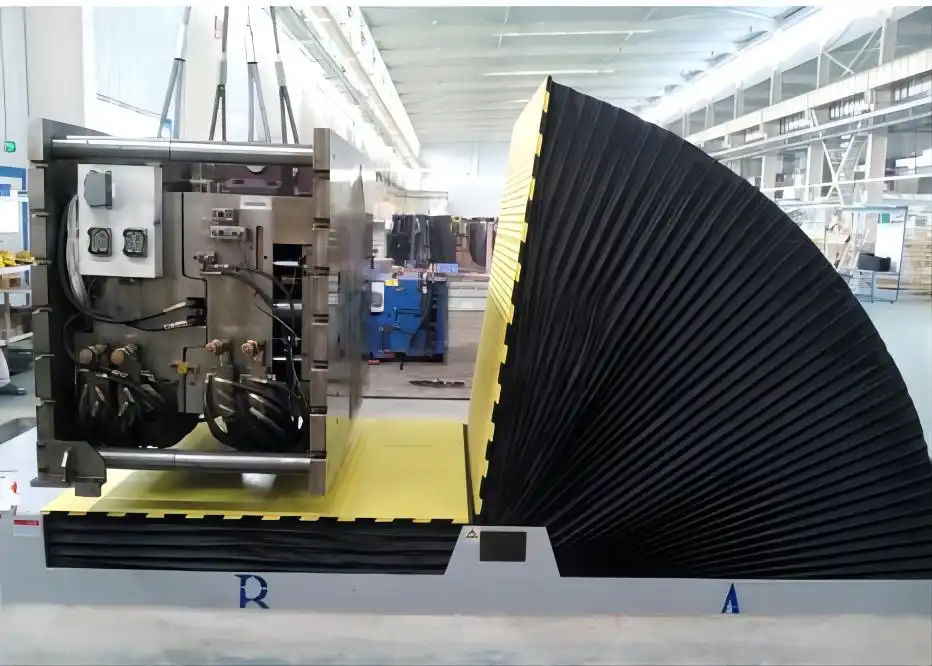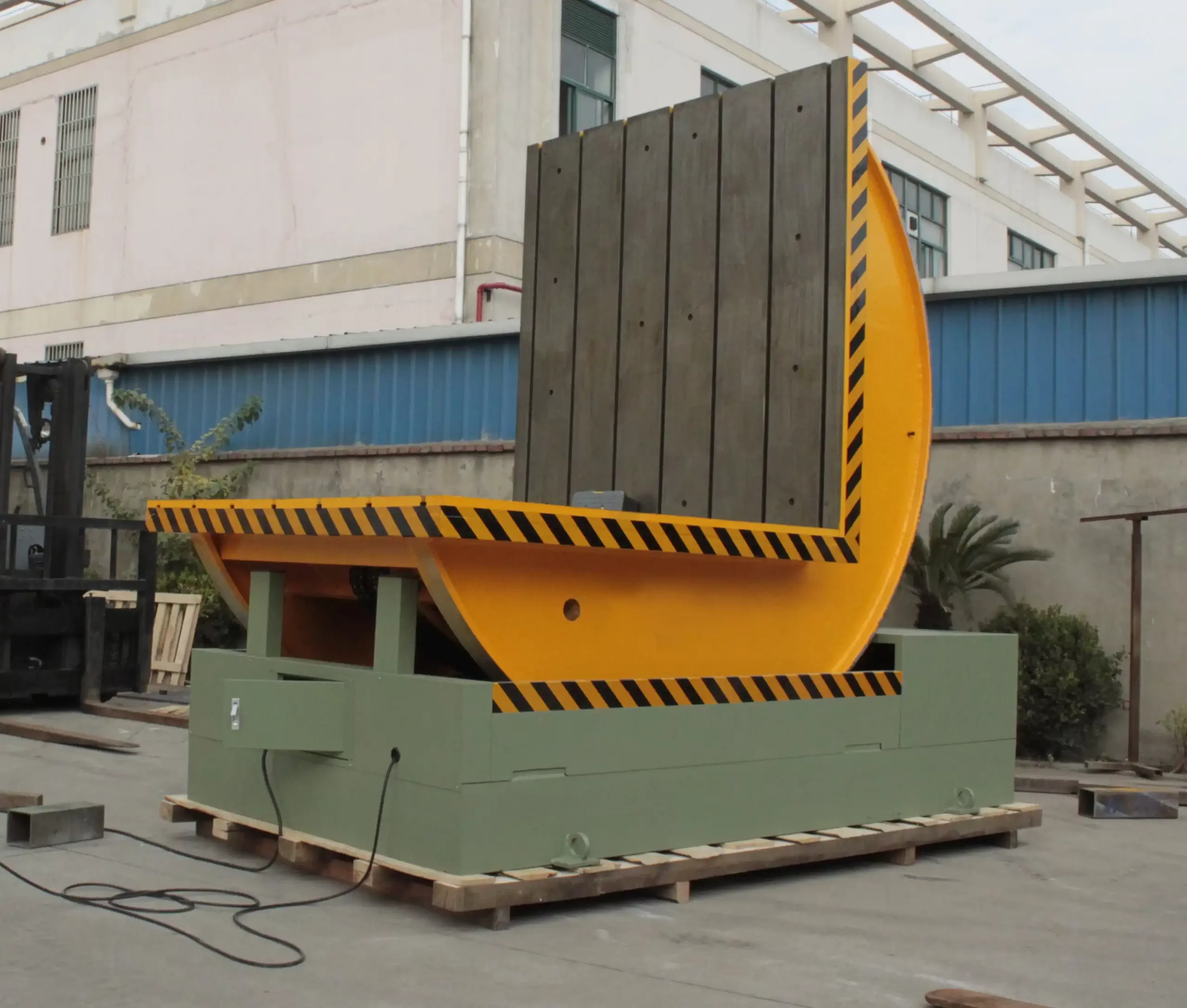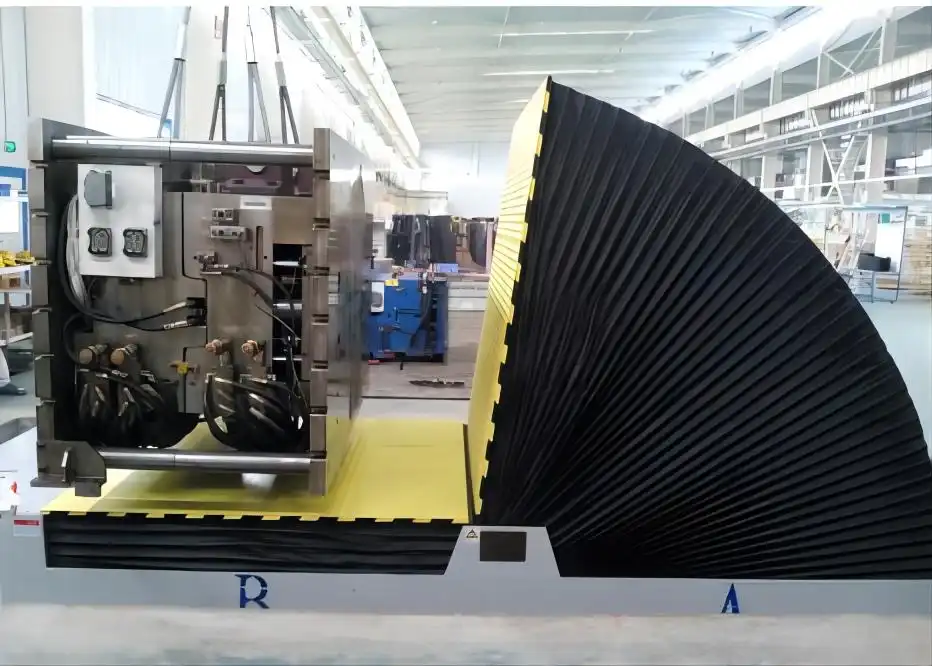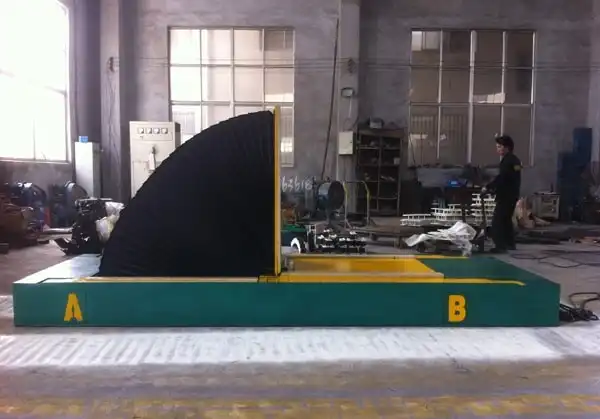I’ve spent over two decades in the packing machine industry, from my first days on the factory floor to building my own company, SHJLPACK. I’ve visited hundreds of workshops and plants, from small family-owned operations to massive steel mills. In many places, especially in bustling Argentine industrial hubs, I see a familiar scene: workers wrestling with heavy, awkward molds, using sheer force and basic cranes. It’s a process that looks tough, feels risky, and creates a visible slowdown. You see the strain on the workers' faces and the bottleneck it forms in the production line, holding back more advanced machinery upstream and downstream. This reliance on an outdated, manual method isn't just a tradition; it's a significant drain on potential, a constant safety risk, and a barrier to real growth.
Yes, manual mold tilting is a major bottleneck slowing down production in many Argentine workshops and similar industrial settings. This outdated practice directly impacts efficiency by creating inconsistent cycle times, increases operational costs through labor and potential product damage, and poses significant, often unacceptable, safety risks to workers. Automating this single step can unlock substantial gains in productivity and create a safer working environment.

Seeing this problem is one thing. Understanding its deep impact on your business is another. It’s easy to accept these manual processes as "the way things have always been done." But as a business owner or a plant manager, your job is to look for every opportunity to improve, to make your operations safer, faster, and more profitable. The decision to move from a manual process to an automated one is not just about buying a new machine. It's a strategic choice. So, let's break down exactly what sticking with manual tilting costs you and what you stand to gain by making a change.
How Does Manual Tilting Directly Impact Worker Safety and Operational Costs?
You see your team working hard, but you also carry the weight of their safety on your shoulders. Every time a worker manually guides a heavy mold, you know there is a risk. A slip, a miscalculation, or a moment of fatigue can lead to a serious accident. This isn't just a hypothetical problem; it's a constant, low-level anxiety for any responsible leader. And when an accident does happen, the costs—both human and financial—are staggering. You face medical bills, workers' compensation claims, and lost production time. The solution is clear: engineer the risk out of the equation. By automating the tilting process, you remove your most valuable asset, your people, from the most dangerous part of the job.
Manual mold tilting directly and negatively impacts worker safety and operational costs. The high risk of physical strain and accidents leads to increased insurance premiums, worker compensation payouts, and lost man-hours. These direct financial drains are coupled with the operational costs of lower productivity and potential equipment or product damage during the manual handling process.

The True Cost of a Workplace Accident
When I work with clients, I often ask them to think beyond the immediate, obvious costs of an injury. We all know about medical bills and insurance claims. But the true cost of a workplace accident runs much deeper and can affect your business for years. A single incident is not just a line item in your budget; it's a ripple effect that touches every part of your operation. It’s a story I’ve seen play out too many times. A seasoned team leader is injured, and suddenly, you’re not just paying for their recovery. You’re dealing with the chaos their absence creates. Let’s break down these costs in a more structured way.
| Cost Category | Examples |
|---|---|
| Direct Costs | Medical expenses, compensation payments, insurance premium hikes, legal fees. |
| Indirect Costs | Lost production time, cost of training a replacement, damage to equipment or molds, administrative time for incident reporting, decreased team morale. |
The Long-Term Erosion of Your Workforce
Beyond the immediate financial shock of an accident, relying on strenuous manual labor has a corrosive effect on your workforce over time. These jobs are physically taxing. They lead to chronic issues like back pain and repetitive strain injuries, which may not cause a dramatic accident but lead to higher rates of absenteeism and lower overall productivity. It becomes difficult to retain good, experienced people. Younger generations are less inclined to take on such physically demanding roles, creating a hiring challenge. I once consulted for a factory owner who was proud of his low turnover, but he confessed that his most experienced workers were all over 50 and he had no plan for when they retired. His reliance on their physical know-how was a ticking clock. Automating the most physically demanding tasks isn't about replacing workers; it's about making their jobs safer, more sustainable, and more appealing to a new generation of talent. It turns a physically punishing job into a skilled operator position, elevating the role and the person in it. This shift is crucial for building a resilient, long-lasting team.
Can Automating Mold Tilting Really Deliver a Measurable Return on Investment?
As a business owner, every investment has to be justified. You’re not just buying equipment; you're solving a problem and expecting a return. When you look at the price tag for a new mold tilter, it's natural to feel hesitant. You ask yourself, "Is this just another cost, or is it a true investment that will pay for itself?" This is the exact question I had to answer when I started my own factory. I learned that the most successful leaders don't just look at the upfront cost; they analyze the long-term value. The solution is to do the math. When you calculate the savings from eliminated labor costs, reduced product damage, and increased throughput, the return on investment (ROI) for automation becomes not just visible, but compelling.
Absolutely. Automating the mold tilting process delivers a clear and measurable return on investment (ROI). The financial benefits are realized through a combination of increased production speed, elimination of manual labor for the task, a sharp reduction in product or mold damage, and lower costs associated with workplace accidents and insurance.

Calculating Your Payback Period
Let's move from concept to concrete numbers. The payback period for a piece of automated equipment like a mold tilter is often much shorter than people expect. The key is to account for all the savings, not just the most obvious ones. When a client in the steel wire industry was considering one of our wrapping lines, he was focused on the labor savings of two workers per shift. That alone was significant. But I encouraged him to dig deeper. We sat down and calculated the cost of damaged wire coils due to improper manual handling and the production delays caused by the slow, inconsistent manual process. When we added those figures to the equation, his payback period dropped from three years to just over 18 months.
To get a clear picture for your own workshop, you can use a simple framework like this. Be conservative with your estimates, and the result will still likely surprise you.
| Savings Category | Current Manual Cost (Annual) | Future Automated Cost (Annual) | Annual Savings |
|---|---|---|---|
| Dedicated Labor | Salary & benefits for 1-2 workers | $0 (re-assigned to higher value tasks) | $40,000 - $80,000 |
| Production Bottleneck | Lost output value due to slow cycles | Minimal (consistent, fast cycles) | $25,000+ |
| Product/Mold Damage | 1-2% of handled product value | <0.1% of handled product value | $10,000+ |
| Injury & Insurance Costs | Variable, but average over 5 years | $0 | $5,000+ |
| Total Estimated Savings | $80,000+ |
The Strategic Value Beyond the Numbers
The calculation above is powerful, but it still doesn't tell the whole story. A reliable, automated process brings strategic value that is harder to quantify but just as important. An automated tilter works at the same speed, with the same precision, every single time. It doesn't get tired. It doesn't get distracted. This consistency and predictability are the foundation of a modern, efficient factory. It allows you to schedule your production with confidence. You know exactly how long that stage will take, so you can optimize the flow to your furnaces, your presses, and your packing lines. This directly addresses the goal of increasing equipment uptime to 95%. It transforms a chaotic, unpredictable variable into a reliable constant. This isn't just an operational upgrade; it's a strategic asset that allows you to plan better, produce more, and build a more resilient business.
What Are the Hidden Costs of Sticking with Outdated Manual Processes?
Sometimes, the most dangerous costs are the ones you can't see on a balance sheet. You might think your manual tilting process is working "good enough" because you've been doing it for 15 years. Your production numbers are stable, and you haven't had a major accident recently. But this sense of stability can be an illusion. Underneath the surface, outdated manual processes are quietly draining your company's potential. They act like a slow leak, gradually reducing your efficiency, hurting morale, and making you less competitive. The real problem isn't just that the process is old; it's that it creates hidden friction throughout your entire operation. The solution is to bring these hidden costs into the light and recognize that "not broken" isn't the same as "optimized."
The hidden costs of sticking with outdated manual processes are substantial. They include missed revenue from production ceilings imposed by bottlenecks, high employee turnover due to poor ergonomics and low morale, inconsistent product quality leading to rework or scrap, and a weakened ability to compete against more agile, automated competitors.

The Compounding Effect of a Bottleneck
Think of your production line as a chain. A chain is only as strong as its weakest link. In many workshops I visit, that weak link is a manual station like mold tilting. You might have a state-of-the-art furnace that can heat material quickly and an advanced CNC machine waiting downstream. But if it takes workers five minutes to manually and safely tilt and position a mold, the entire line is forced to wait. The overall pace of your factory is dictated not by your best equipment, but by your slowest, most inefficient process. This is the bottleneck effect in action.
This hidden cost goes beyond just lost time. It means your expensive, high-capacity machines are sitting idle, not generating value. It's like owning a race car but only being able to drive it in city traffic. This directly fights against the goal of maximizing asset utilization. I remember a client who invested heavily in a new slitting line. He was disappointed with the output until we identified that the manual coil packing at the end was the real constraint. The new machine could produce coils twice as fast, but the packing team couldn't keep up. By automating the packing and strapping, we didn't just speed up the packing; we unleashed the full potential of his entire investment.
The Quiet Drain on Quality and Morale
Manual handling is, by its nature, inconsistent. A worker at the start of a shift is strong and focused. After eight hours of physically demanding labor, they are tired. This fatigue can lead to small mistakes. A mold might be tilted a bit too quickly, causing a hairline crack. It might be set down too hard, damaging the alignment pins. These small quality issues add up. They lead to increased scrap rates, customer complaints, and time wasted on rework. Automation eliminates this human variability. Every cycle is performed with the exact same speed, force, and precision. This guarantees a level of consistency that is impossible to achieve manually, ensuring the quality you promise your customers is the quality you deliver.
Furthermore, asking your team to perform dangerous, repetitive, and physically exhausting work takes a toll on morale. People don't feel valued when their job could be done better and more safely by a machine. This leads to a lack of engagement and higher turnover. By automating these tasks, you're sending a clear message to your team: "We value your safety and your intelligence more than your physical strength. We want to move you to a role where you are supervising and managing technology, not being worn down by it." This shift is fundamental to building a modern, motivated workforce.
How Does Upgrading a Single Process Fit into a Broader Digital Transformation Strategy?
You might be thinking about the big picture: implementing a full Manufacturing Execution System (MES), deploying IoT sensors, and using data to drive decisions. In that context, upgrading a single machine like a mold tilter can feel like a small, tactical move rather than a strategic one. It's easy to think, "I'll focus on the big software and data platforms first." But I've learned that a successful digital transformation isn't built from the top down. It's built from the ground up, on a foundation of solid, reliable, and connected equipment. The solution is to view each piece of automated machinery not as an isolated island, but as a future data node in your smart factory network.
Upgrading a single process like mold tilting is a critical, foundational step in any broader digital transformation strategy. It replaces a manual "black box" with a controlled, automated system that can generate data, accept commands, and integrate seamlessly with higher-level MES and IoT platforms, providing the essential link between the digital plan and the physical reality on the factory floor.

Building the Foundation for a Smart Factory
A true digital transformation is about creating a seamless flow of information from the factory floor to the top floor. You can have the most advanced scheduling software in the world, but if it relies on a worker manually typing in when a process is complete, you have a critical weakness. The data is slow, prone to error, and lacks detail. A modern automated system, even a relatively simple one like a mold tilter, changes everything. It's controlled by a PLC (Programmable Logic Controller), which is essentially the machine's brain. This brain can talk. It can connect to your factory's network.
This is the key. By automating a process, you create a reliable source of real-time data. You are building the physical infrastructure that will feed your digital systems. Without automated processes on the floor, your MES is flying blind. You can't achieve comprehensive production visualization or predictive maintenance if your key processes are offline and unmonitored. Each piece of automated equipment you install is another step towards closing that gap and building a truly data-driven operation.
From Mechanical Upgrade to Data Asset
Think of a new automated tilter not just as a piece of mechanical equipment, but as a data asset. It’s a node on your network that provides crucial information for control and analysis. This is how you bridge the gap between your operational goals and your digital strategy. Let's look at the practical connections.
| Feature of Automated Tilter | Contribution to Digital Transformation |
|---|---|
| PLC Control & Network Port | Enables direct integration with your central MES for real-time status updates and control. |
| Cycle Counter & Timer | Provides accurate, automatic data on throughput and cycle times for your OEE calculations. |
| Sensor Feedback (Position, Weight) | Confirms processes are complete and provides data for quality control and traceability. |
| Motor Current & Fault Diagnostics | Feeds data to your predictive maintenance platform, alerting you to potential issues before they cause downtime. |
When you look at it this way, the investment is no longer just about tilting a mold more efficiently. It's about laying a cornerstone for your future factory. It's a tangible step that makes your goal of deploying MES, IoT, and big data platforms a reality. It's how you connect your high-level strategy to the steel and concrete of your factory floor, creating a system that is not only smarter but fundamentally more robust and profitable.
Conclusion
Automating manual tasks like mold tilting is not just an equipment upgrade. It's a strategic move towards a safer, more efficient, and more profitable future for your workshop.




